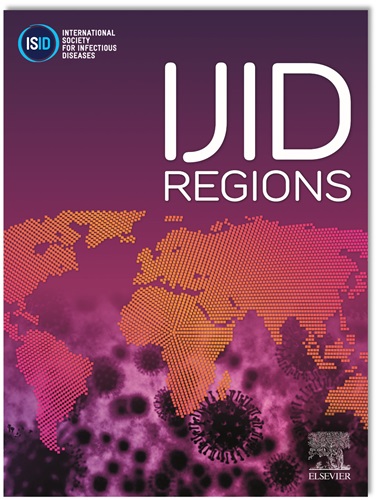The hidden burden of enteric infections in British Columbia, Canada, 2005-2014
IF 4.8
2区 医学
Q1 INFECTIOUS DISEASES
引用次数: 0
Abstract
Introduction
One in eight Canadians experiences an enteric infection annually. In British Columbia (BC), Canada significant risks of sequelae and death following laboratory-confirmed, reported enteric infections exist, including a 30 times higher risk of acute kidney injury (AKI) and a 4 times higher risk of inflammatory bowel disease (IBD). However, reported infections do not represent everyone who seeks care for these infections. Thus, we aimed to determine whether individuals who sought care for enteric infections, but for whom no laboratory-confirmed infection was reported, were also at risk for kidney, gastrointestinal, and rheumatological sequelae and death, in BC, Canada.
Methods
We conducted a retrospective cohort study of everyone registered in BC's health insurance program, 2005-2014 (n=5,819,344). The cohort was followed for ∼7.5 years/person, and included 40,523 individuals with 42,308 laboratory-confirmed, reported enteric infections. Individuals with a physician visit or hospitalization with an International Classification of Disease (ICD) code for enteric infection or non-specific acute gastroenteritis, but without a reported, laboratory-confirmed infection, were our case group. Sequelae and deaths (from all causes) were identified using administrative data and vital statistics. We estimated risks using adjusted hazard ratios (aHRs) from extended Cox regression models, adjusting for age, sex, comorbidities, and neighbourhood income. Our comparison group was those without any evidence of enteric infection, i.e., who never had a laboratory-confirmed reported enteric infection, nor any physician visits or hospitalizations with ICD codes for enteric infections, during the study.
Results
From 2005-2014, 238,116 people experienced 298,577 separate episodes where they sought medical care with an ICD code for enteric infection, with no accompanying laboratory-confirmation reported. For these individuals, the risk of AKI was 21.4 times higher (95% confidence interval [CI]: 20.7, 22.1) in the 90 days after seeking care, and the risk of hemolytic-uremic syndrome was 40.9 times higher (95% CI: 20.5, 81.5) in the 1-45 days. Their risks of IBD (aHR: 4.73, 95%CI: 4.44, 5.05), celiac disease (aHR: 3.98; 95%CI: 3.72, 4.26), and irritable bowel syndrome (aHR: 4.91, 95%CI: 4.71, 5.13) in the six months after seeking care were also significantly higher. The risks of ankylosing spondylitis, reactive arthritis, and anterior uveitis were smaller, but also significant. The risk of dying was 8.75 times higher (95% CI: 8.38, 9.14) in the 30 days following a physician visit or hospitalization.
Discussion
The risks of sequelae and mortality is comparable regardless of whether individuals had a laboratory-confirmed, reported infection. These findings are consistent with those reported by others, demonstrating the validity of using administrative health data to investigate sequelae of infections.
Conclusion
The burden of illness related to enteric infections is greater than that related to the acute infection. Multisectoral public health actions and patient education are therefore important to prevent enteric infections and their sequelae.
求助全文
约1分钟内获得全文
求助全文
来源期刊
CiteScore
18.90
自引率
2.40%
发文量
1020
审稿时长
30 days
期刊介绍:
International Journal of Infectious Diseases (IJID)
Publisher: International Society for Infectious Diseases
Publication Frequency: Monthly
Type: Peer-reviewed, Open Access
Scope:
Publishes original clinical and laboratory-based research.
Reports clinical trials, reviews, and some case reports.
Focuses on epidemiology, clinical diagnosis, treatment, and control of infectious diseases.
Emphasizes diseases common in under-resourced countries.

 求助内容:
求助内容: 应助结果提醒方式:
应助结果提醒方式:


